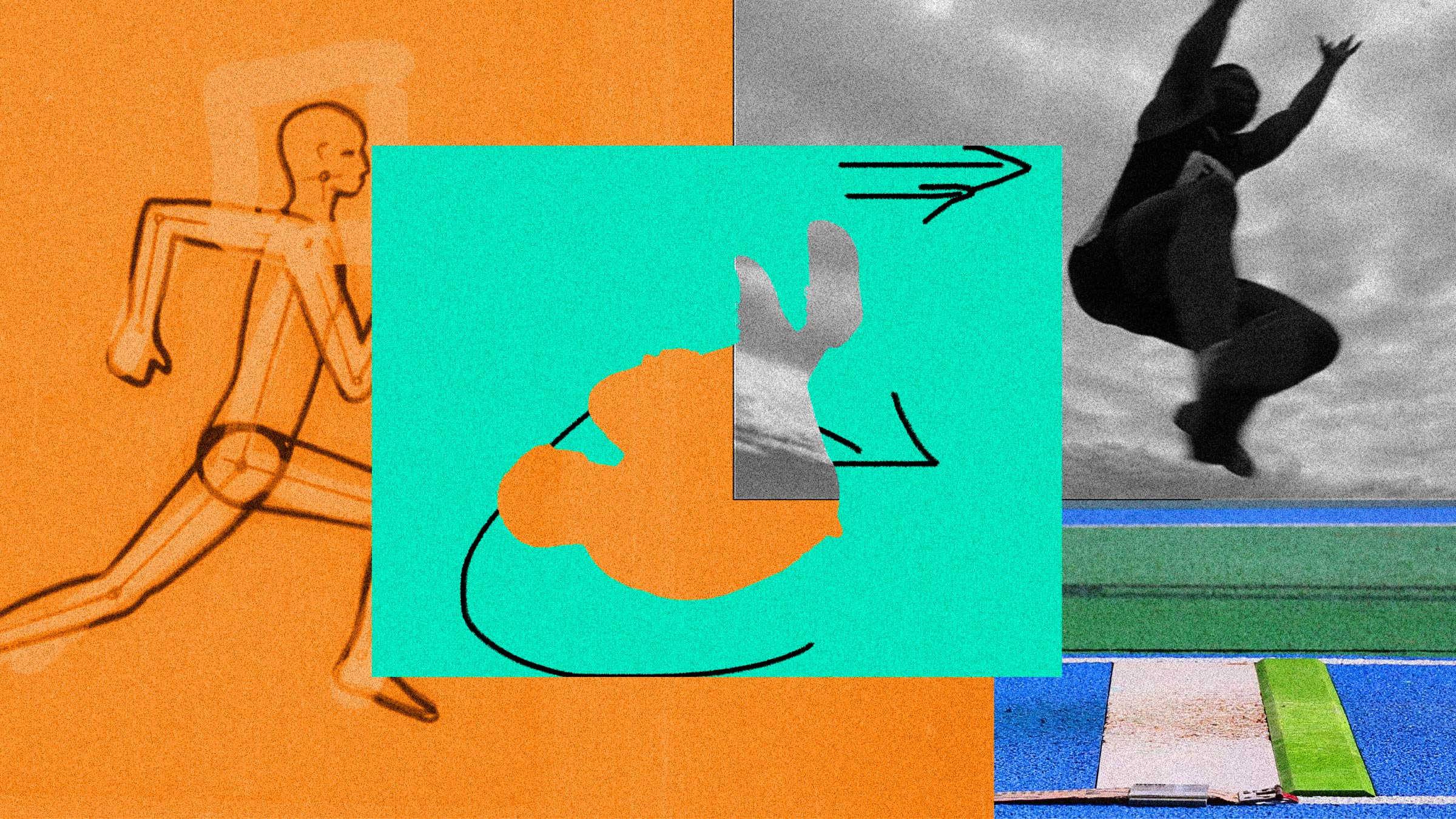Tuariki Delamere’s Somersault Could Have Launched a New Era in the Olympic Long Jump

Catch it live: The Men’s Long Jump Final at the Paris Olympics will be held on Tuesday, August 6, at 2:20 pm ET. The Women’s Final is on Thursday, August 8, at 2 pm ET.
Whether an athlete wins gold or silver at the Summer Olympics can turn on the tiniest of margins, so competitors are always looking for an edge. It could be a tight-fitting outfit to reduce air drag or a novel technique like the Fosbury flop for the high jump—which everyone uses today.
In 1974, it looked like Tuariki Delamere would revolutionize the long jump by doing a somersault in midair. It seemed crazy, but he analyzed the idea with a biomechanics professor at his school, and they agreed: It was a more efficient way to jump. It also looked cool as hell. Sadly, the sport’s governing body stepped in and banned the technique before the 1975 Olympics. Delamere never got his chance.
Why would incorporating a front flip in your jump give you a leg up (so to speak) on the competition? It’s all in the physics. Let’s investigate, shall we?
A Simplified Model
People are complicated, and jumping people are more complicated. To get at the fundamental forces in play, physicists often start by simplifying. So let’s imagine a jumper who is a ball. (Yes, like in the old spherical cow joke.) You can’t get simpler than that!
They’ll still have the mass and speed of a human, but with a shape that eliminates gangly limbs. Don’t ask me how they run and jump—it just happens. So here is my spherical long jumper:
COURTESY OF RHETT ALLAIN
The ball “runs” to the left with a velocity v1. In order to jump, the velocity needs to change so that it has an upward component. (Remember, velocity is not just speed; it also has a specific direction, as shown by the red arrows above.)
According to Newton’s second law, you need a nonzero net force to cause a change in velocity, and this can be modeled as an increased force from the ground on the jumper. With nonspherical athletes, this “normal” force (N) results from using their legs to push down on the ground—which (by Newton’s third law) creates an equal and opposite force launching them into the air.
Once you leave the ground you maintain the same horizontal velocity as you had on the runway, and the only remaining force is gravity (mg), which eventually brings you down to earth. Notice that the length of your jump is determined by your running speed and the strength of your push-off alone—nothing that happens in the air matters.
Turning Point
Now let’s take a step closer to reality and model the human as a stick. I know, that hardly seems like progress, but your body is an elongated object, and that shape makes a world of difference.
First, suppose there’s a single force acting on the stick at its center of mass (so right in the middle). This will make our stick accelerate to the left. Nothing new here.
COURTESY OF RHETT ALLAIN
But what if we push on it at a different point? In that case, the stick will also begin to rotate.
COURTESY OF RHETT ALLAIN
The linear acceleration of the stick (a) is still the change of velocity at the center of mass. But now we have to deal with torque (τ) and angular acceleration (α) as well.
Torque is a rotational force, like when you twist a wrench. Its depends on the magnitude of the force applied (F) and where it’s applied. Just like with a lever arm, the farther out (r) you apply the force, the more torque you get.
So what is angular velocity? For a rotating object like, say, an Olympic ice skater, it’s how fast they spin. We can describe changes in rotational motion with angular acceleration (α)—it’s just like linear acceleration but for circular motion.
Oh, and that symbol I in there? Technically, that’s the moment of inertia, but I like to call it the rotational mass, because it acts like the mass does in Newton’s second law: For a given torque, a larger moment of inertia means a smaller angular acceleration.
Basically, inertia depends on how the mass is distributed around the center. Like in a flywheel, the farther out the mass is, the less angular acceleration you get. This is why a skater pulls their arms in to speed up. On the flip side, it’s also why Simone Biles’ double pike (with straight legs) is much harder than a double tuck (with bent legs)—it takes more time to complete the move in the air.
Avoiding the Face Plant
Now we’re ready to look at an actual human jumper. We can focus on just the forces acting on the athlete at the point of takeoff. Here’s a diagram:
COURTESY OF RHETT ALLAIN
As before, there are two basic forces at this instant. There’s the inescapable gravitational force (mg), which acts at the center of mass. The other force (N) is pushing up from the ground and probably a little bit forward too.
However, since this force is applied at the feet, far from the center of mass (r > 0), it’s going to produce a torque. In this case, the torque would cause a forward angular acceleration, tending to deposit the jumper face down in the sand.
So athletes use a few different techniques to counter this rotation. The first is to lean back in the jump—this moves the center of mass closer to the contact point of the foot, thus reducing torque. But it also slows you down. Another is the hang technique, where the jumper extends their arms and legs like a giant sail in the air. As we’ve seen, that increases their moment of inertia, perhaps at the cost of some extra wind drag.
The method used by most Olympic athletes is the hitch kick (shown here by Carl Lewis, who won four gold medals in the event). It looks like the jumper is running in the air, “windmilling” their arms and legs as they fly. What this does is transfer the rotation of the body into a rotation of the arms and legs. (Technically, it’s a form of conservation of angular momentum.)
People often think this running motion makes the jumper go farther, but it doesn’t—with traditional techniques, your distance is pretty much set once you take off, just as in our ball model above. It’s all to fight the rotation so you can stick the landing.
The Somersault Jump
Tuariki Delamere’s approach was radically different. Instead of trying to fight the rotation, he said, why not go with the flow and use that rotation? If you lean forward as the back foot pushes off, you can produce even more torque—and maybe more jumping force too. After that, you could just continue the rotation until you land on your feet … hopefully.
But wait! There’s another benefit too. If the jumper tucks their knees in toward their chest, this will increase their angular velocity (just like the ice skater above). This would also give them a smaller cross-sectional area in flight, reducing air drag. The effect would be small, but remember: Small differences win gold medals.
There’s another cool benefit of the somersault long jump. As the athlete rotates in the air, the tucked position brings the feet forward quickly to make contact with the ground in front of the jumper. If you do it right, you’d then roll forward so you don’t fall back on your seat or hands.
Delamere’s technique might have added significant distance to long jumps. Many experts think it could have broken the 30-foot mark. (The world record is 29 feet, 4 inches.) But he was never given the chance, because the sporting authorities said it was too dangerous. Evidently they’d never seen gymnastics or ski jumping.
My opinion? Old-timers in track and field cared more about their traditions and saw no place for a little flash and creativity—especially if it left hallowed records in the dust. Maybe that’ll change. Who knows? After all, breakdancing is now an Olympic event!





